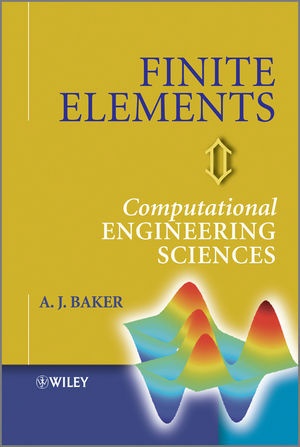Read more
Informationen zum Autor A. J. Baker is Professor Emeritus, Engineering Science and Computational Engineering, The University of Tennessee, USA. He is an elected Fellow of the International Association for Computational Mechanics (IACM) and the US Association for Computational Mechanics (USACM) and an Associate Fellow of the American Institute of Aeronautics and Astronautics (AIAA). Klappentext Approaches computational engineering sciences from the perspective of engineering applicationsUniting theory with hands-on computer practice, this book gives readers a firm appreciation of the error mechanisms and control that underlie discrete approximation implementations in the engineering sciences.Key features:* Illustrative examples include heat conduction, structural mechanics, mechanical vibrations, heat transfer with convection and radiation, fluid mechanics and heat and mass transport* Takes a cross-discipline continuum mechanics viewpoint* Includes Matlab toolbox and .m data files on a companion website, immediately enabling hands-on computing in all covered disciplines* Website also features eight topical lectures from the author's own academic coursesIt provides a holistic view of the topic from covering the different engineering problems that can be solved using finite element to how each particular method can be implemented on a computer. Computational aspects of the method are provided on a companion website facilitating engineering implementation in an easy way. Zusammenfassung Approaches computational engineering sciences from the perspective of engineering applications Uniting theory with hands-on computer practice, this book gives readers a firm appreciation of the error mechanisms and control that underlie discrete approximation implementations in the engineering sciences. Inhaltsverzeichnis Preface viii Notation xi 1 COMPUTATIONAL ENGINEERING SCIENCE 1 1.1 Engineering simulation 1 1.2 A problem solving environment 2 1.3 Problem statements in engineering 4 1.4 Decisions on forming WS N 6 1.5 Discrete approximate WS h implementation 8 1.6 Chapter summary 9 1.7 Chapter references 10 2 PROBLEM STATEMENTS 11 2.1 Engineering simulation 11 2.2 Continuum mechanics viewpoint 12 2.3 Continuum conservation law forms 12 2.4 Constitutive closure for conservation law PDEs 14 2.5 Engineering science continuum mechanics 18 2.6 Chapter references 20 3 SOME INTRODUCTORY MATERIAL 21 3.1 Introduction 21 3.2 Multi-dimensional PDEs, separation of variables 22 3.3 Theoretical foundations, GWS h 27 3.4 A legacy FD construction 28 3.5 An FD approximate solution 30 3.6 Lagrange interpolation polynomials 31 3.7 Chapter summary 32 3.8 Exercises 34 3.9 Chapter references 34 4 HEAT CONDUCTION 35 4.1 A steady heat conduction example 35 4.2 Weak form approximation, error minimization 37 4.3 GWS N discrete implementation, FE basis38 4.4 Finite element matrix statement 41 4.5 Assembly of {WS} e to form algebraic GWS h 43 4.6 Solution accuracy, error distribution 45 4.7 Convergence, boundary heat flux 47 4.8 Chapter summary 47 4.9 Exercises 48 4.10 Chapter reference 48 5 STEADY HEAT TRANSFER, n =1 49 5.1 Introduction 49 5.2 Steady heat transfer, n = 1 50 5.3 FE k = 1 trial space basis matrix library 52 5.4 Object-oriented GWS h programming 55 5.5 Higher completeness degree trial space bases58 5.6 Global theory, asymptotic error estimate 62 5.7 Non-smooth data, theory generalization 66 5.8 Temperature dependent conductivity, non-linearity 69 5.9 Static condensation, p

